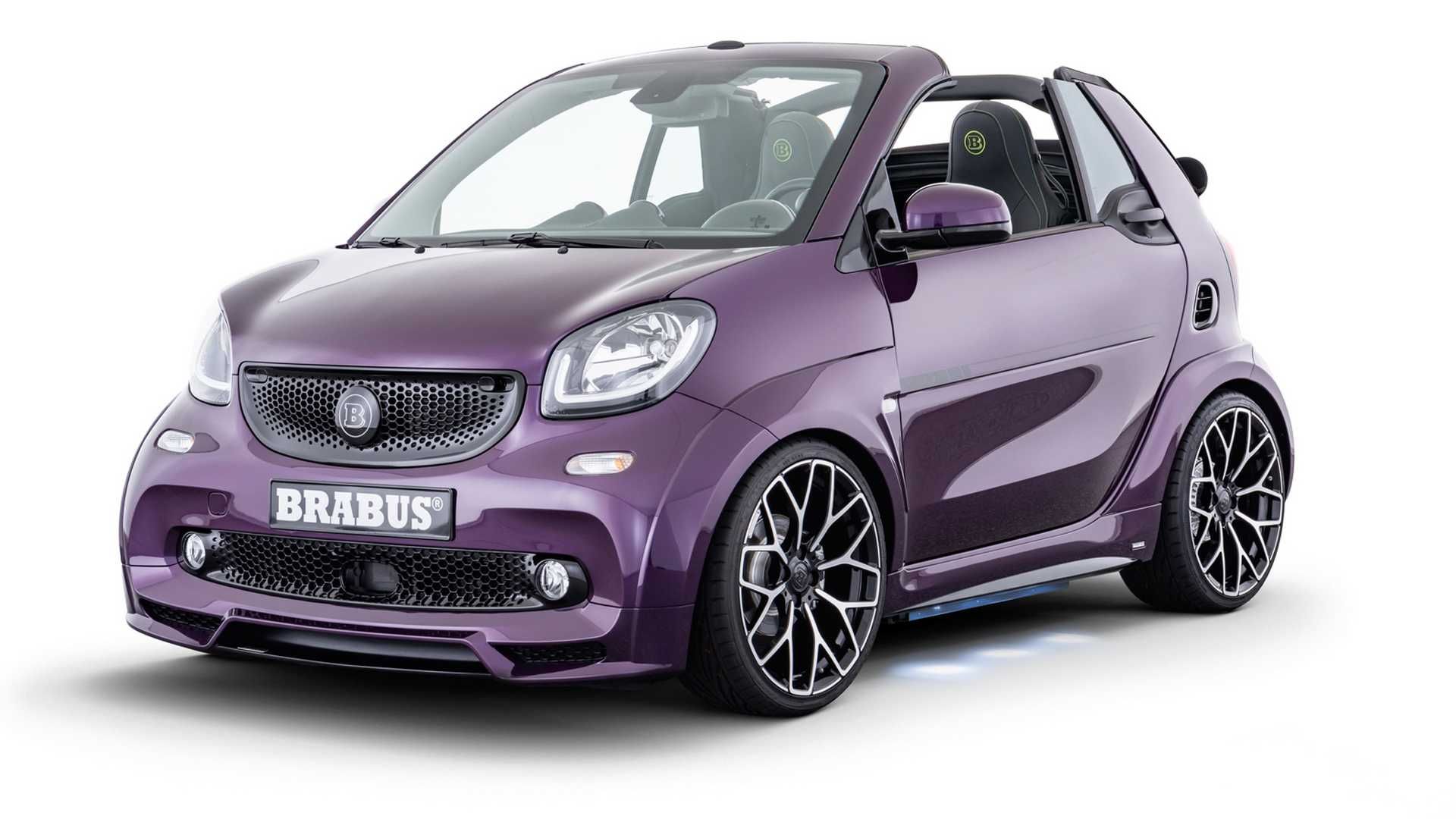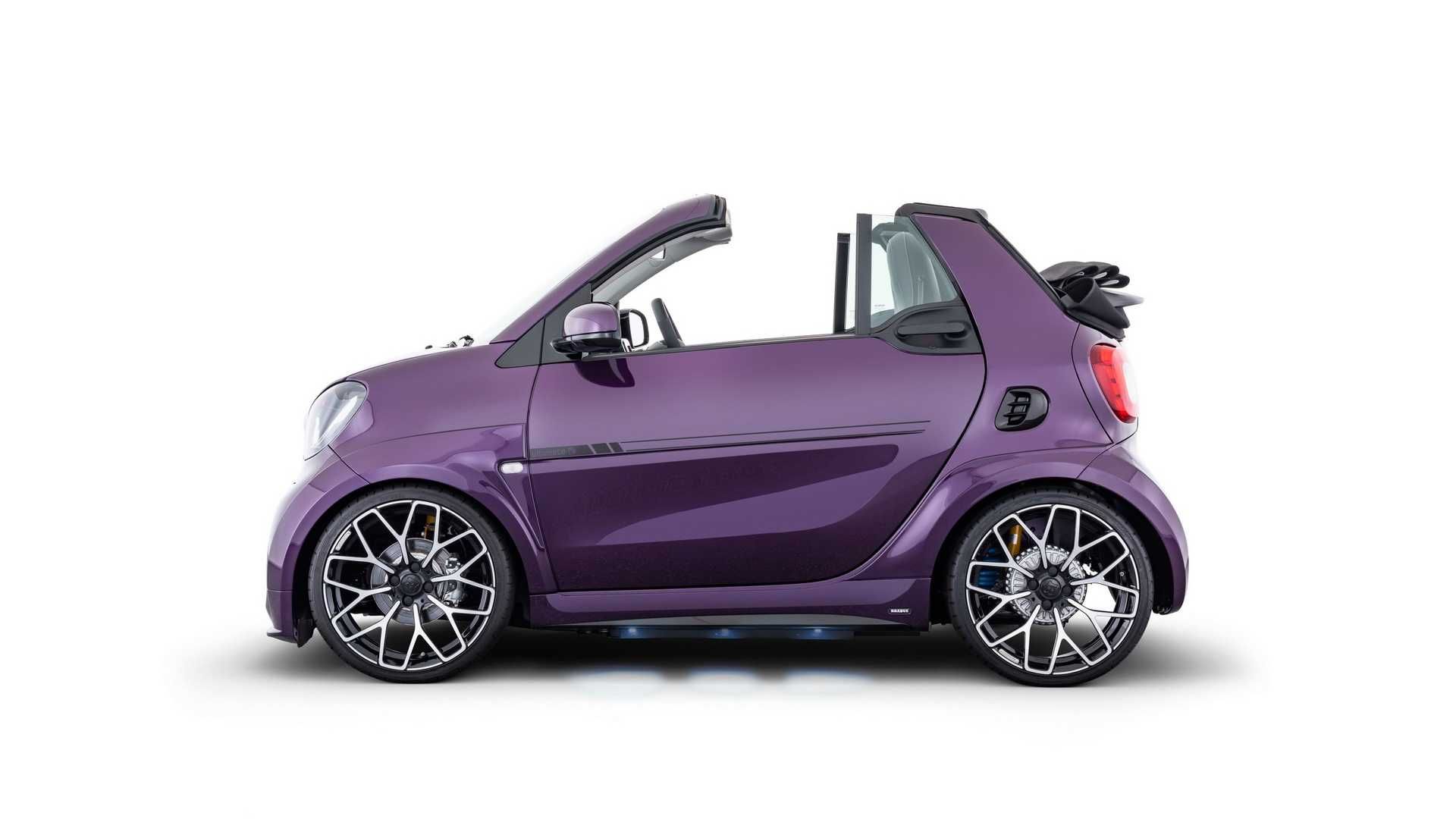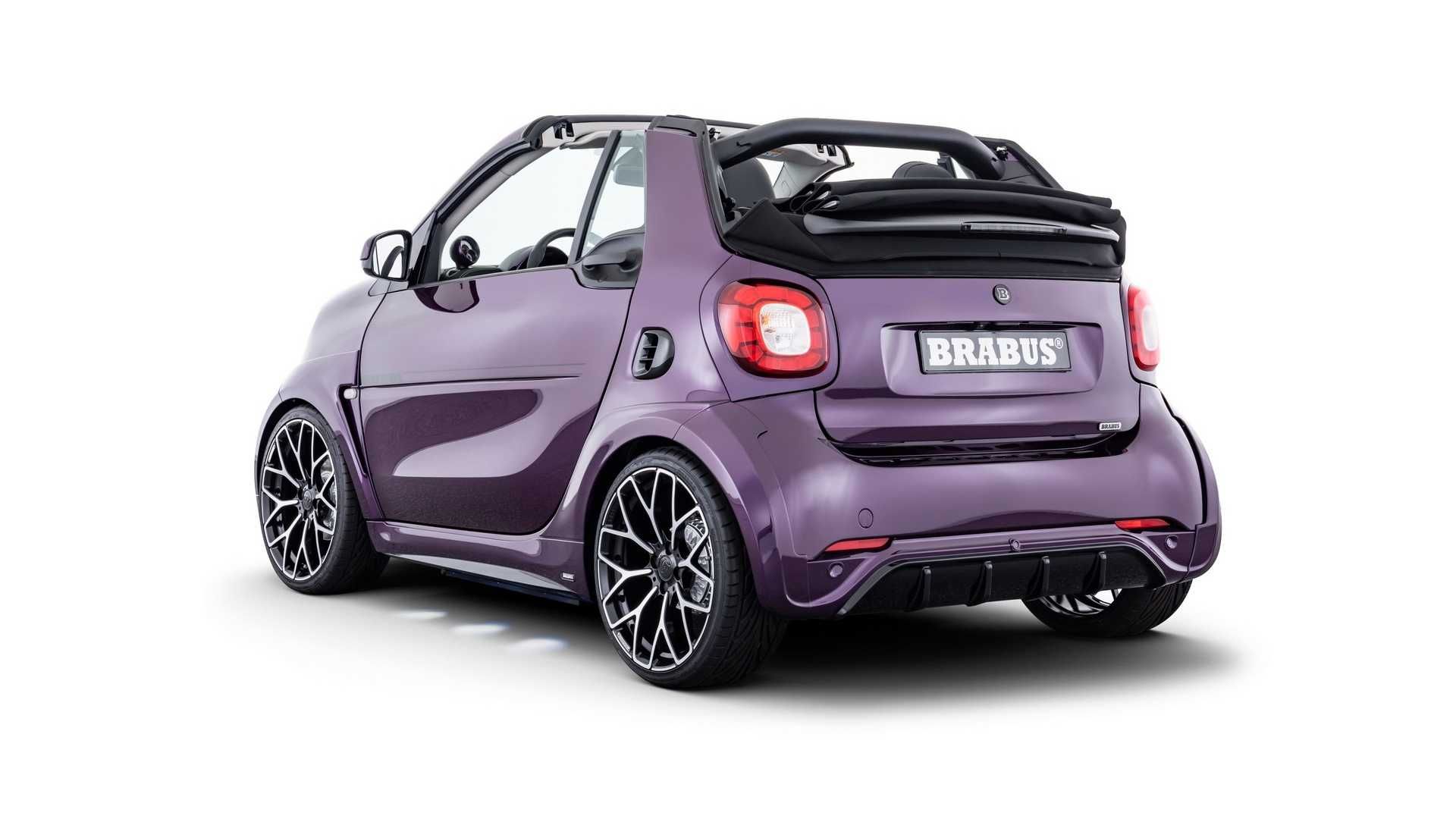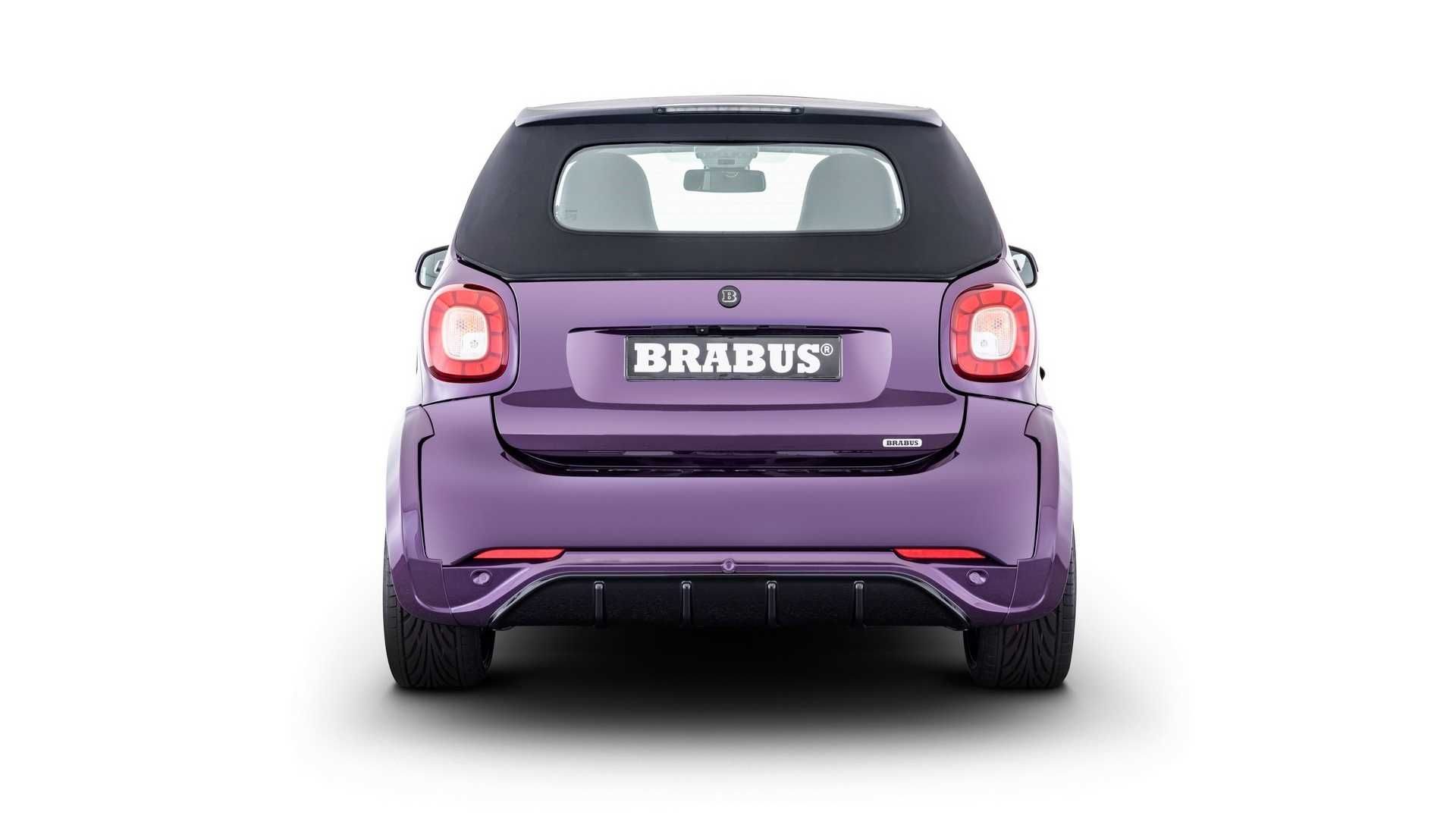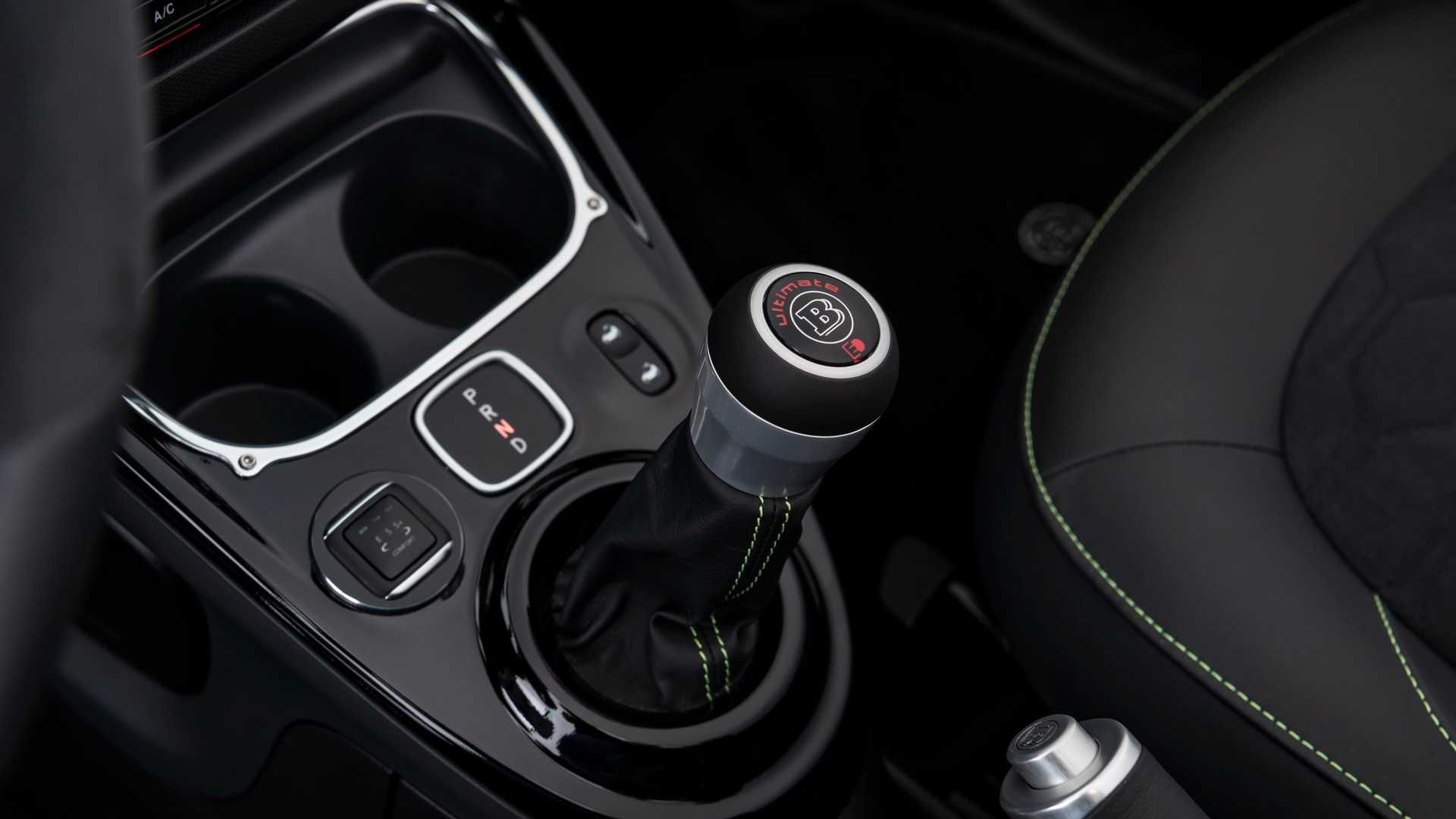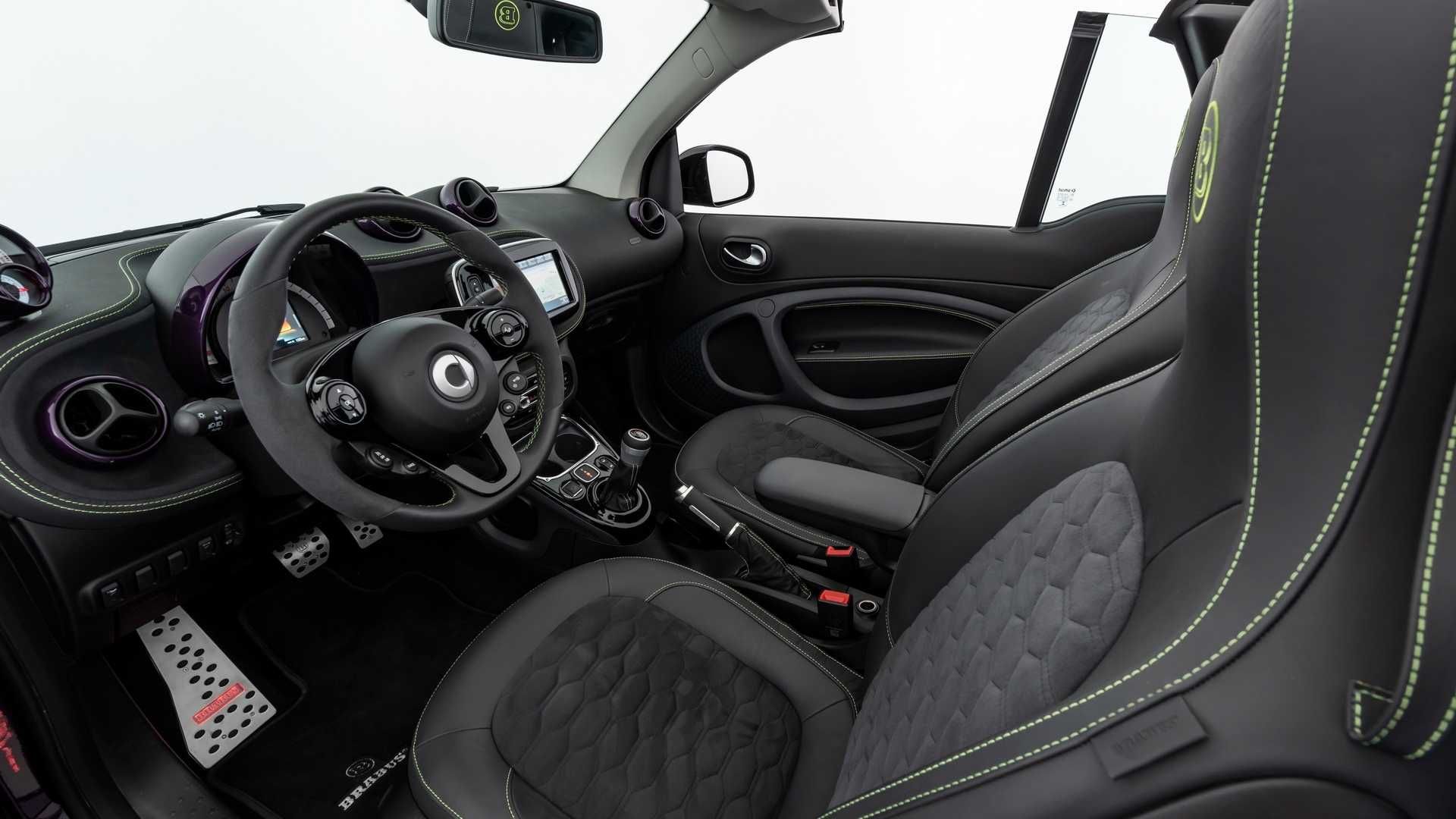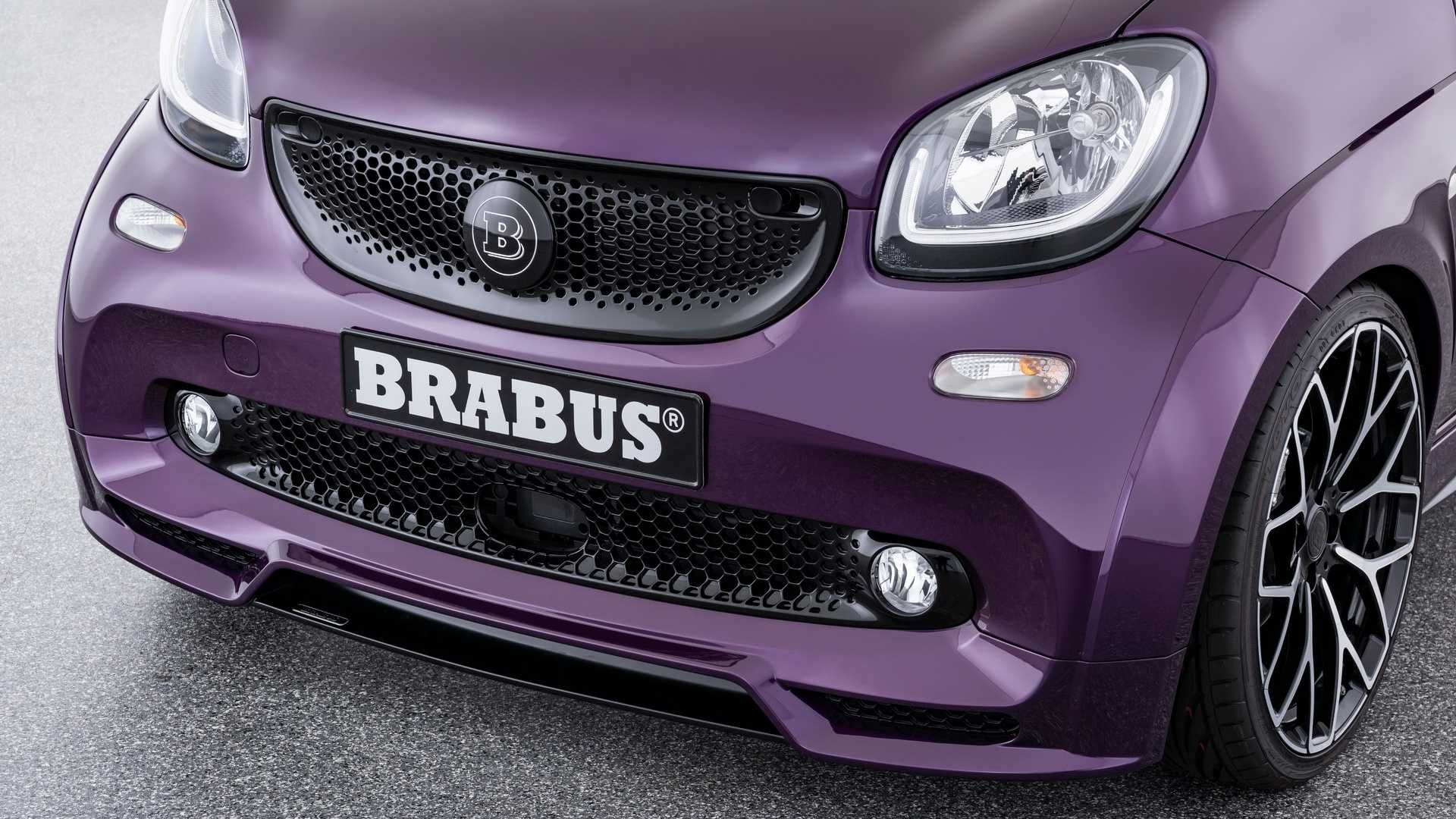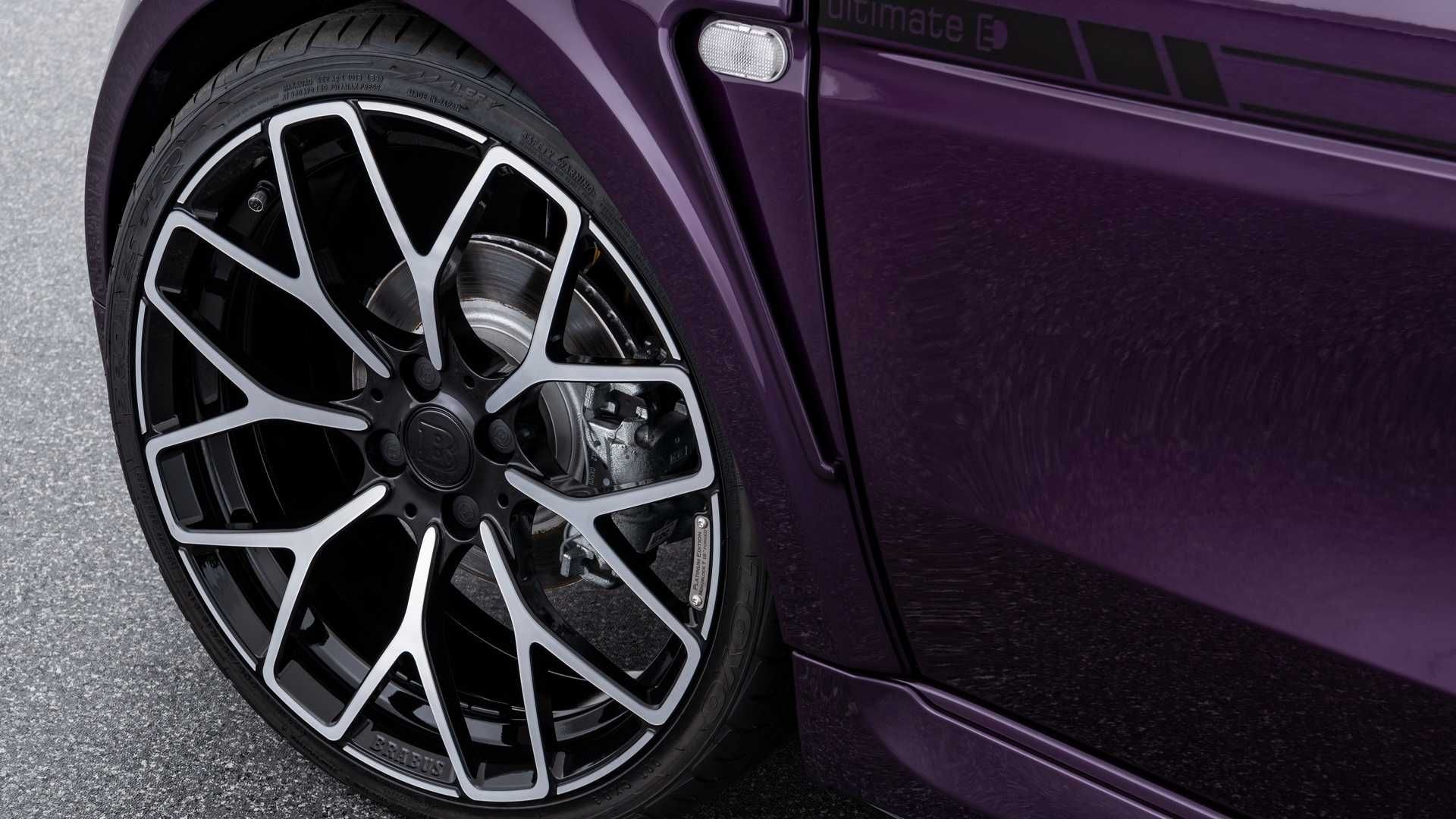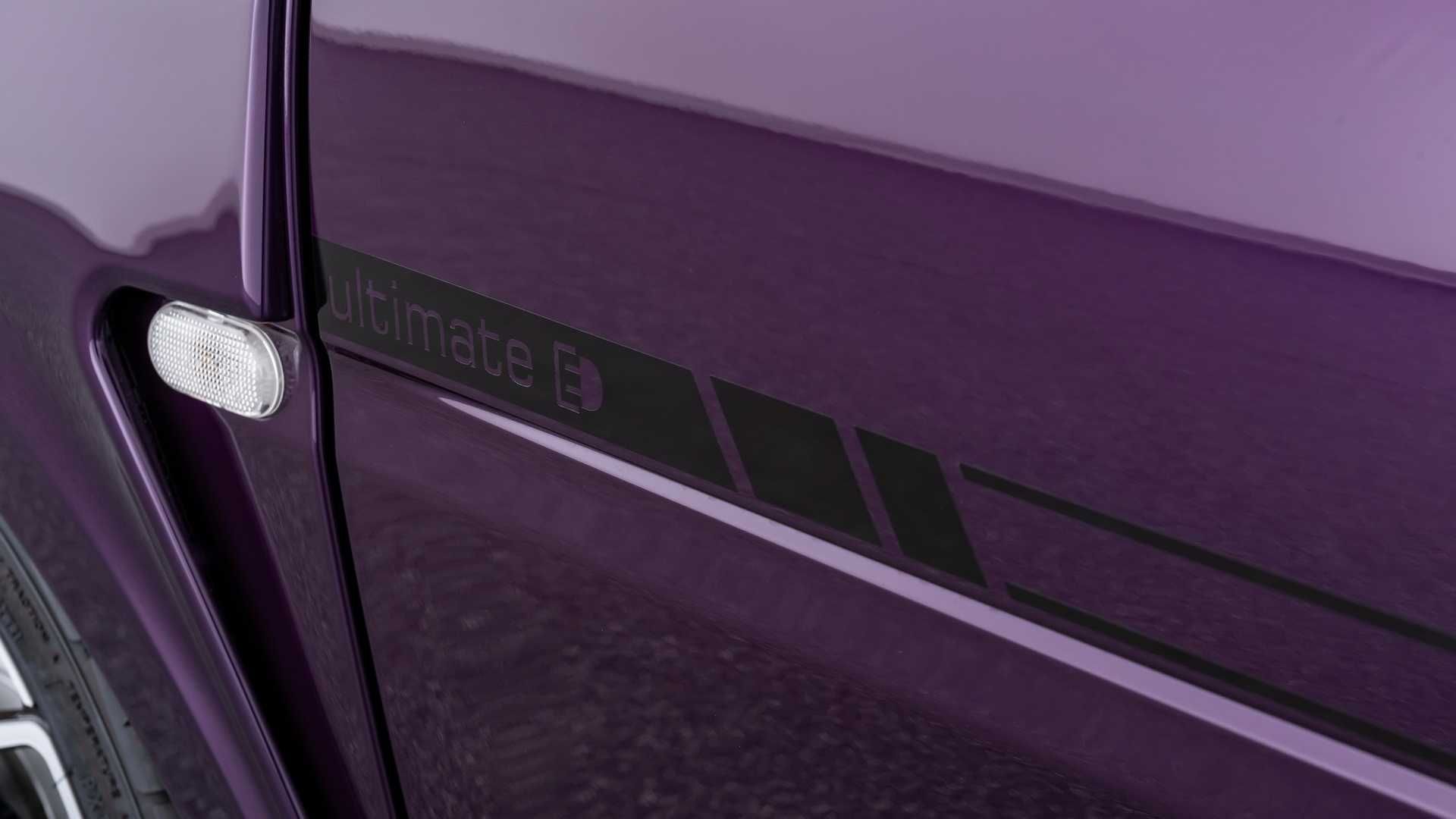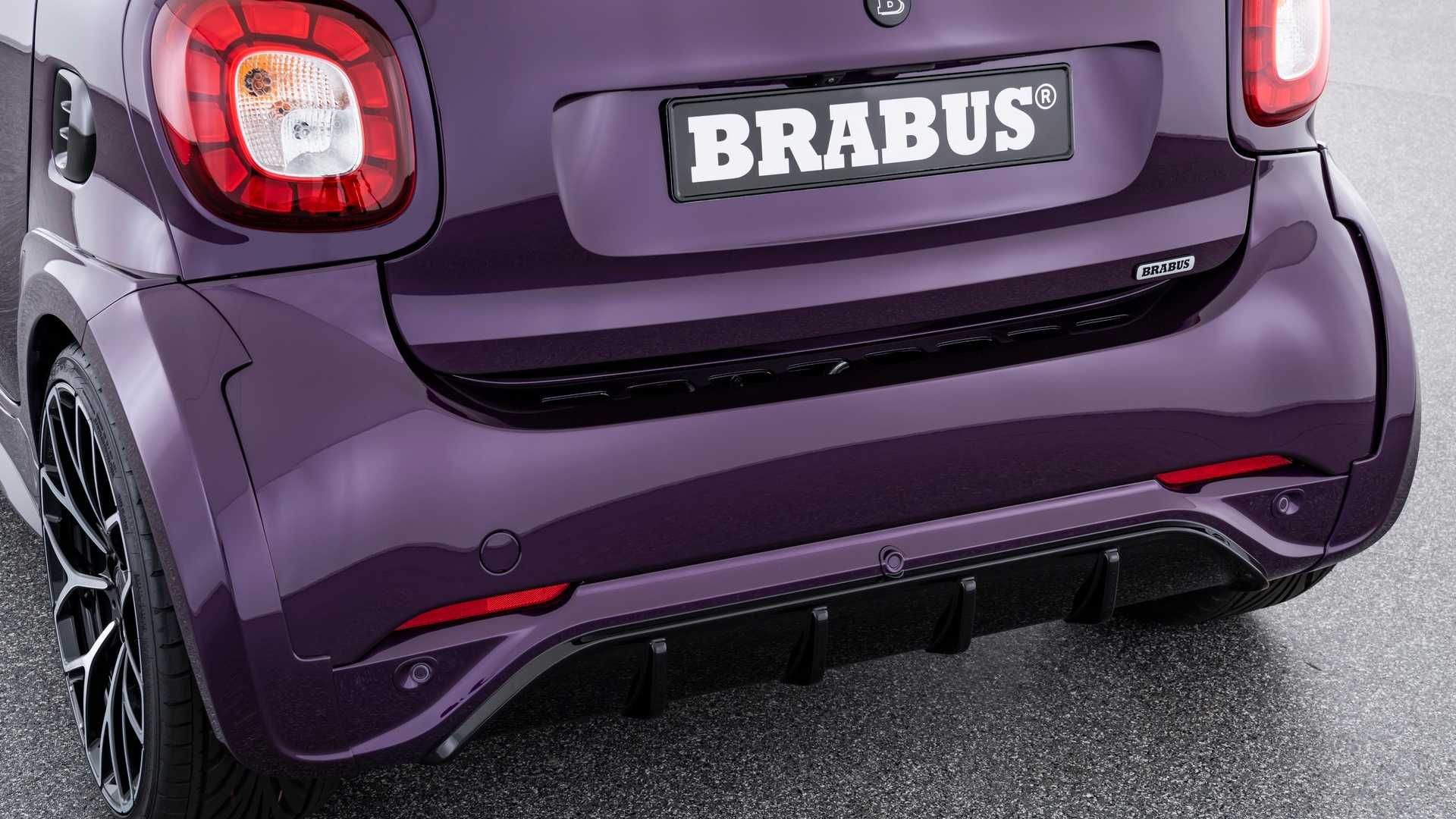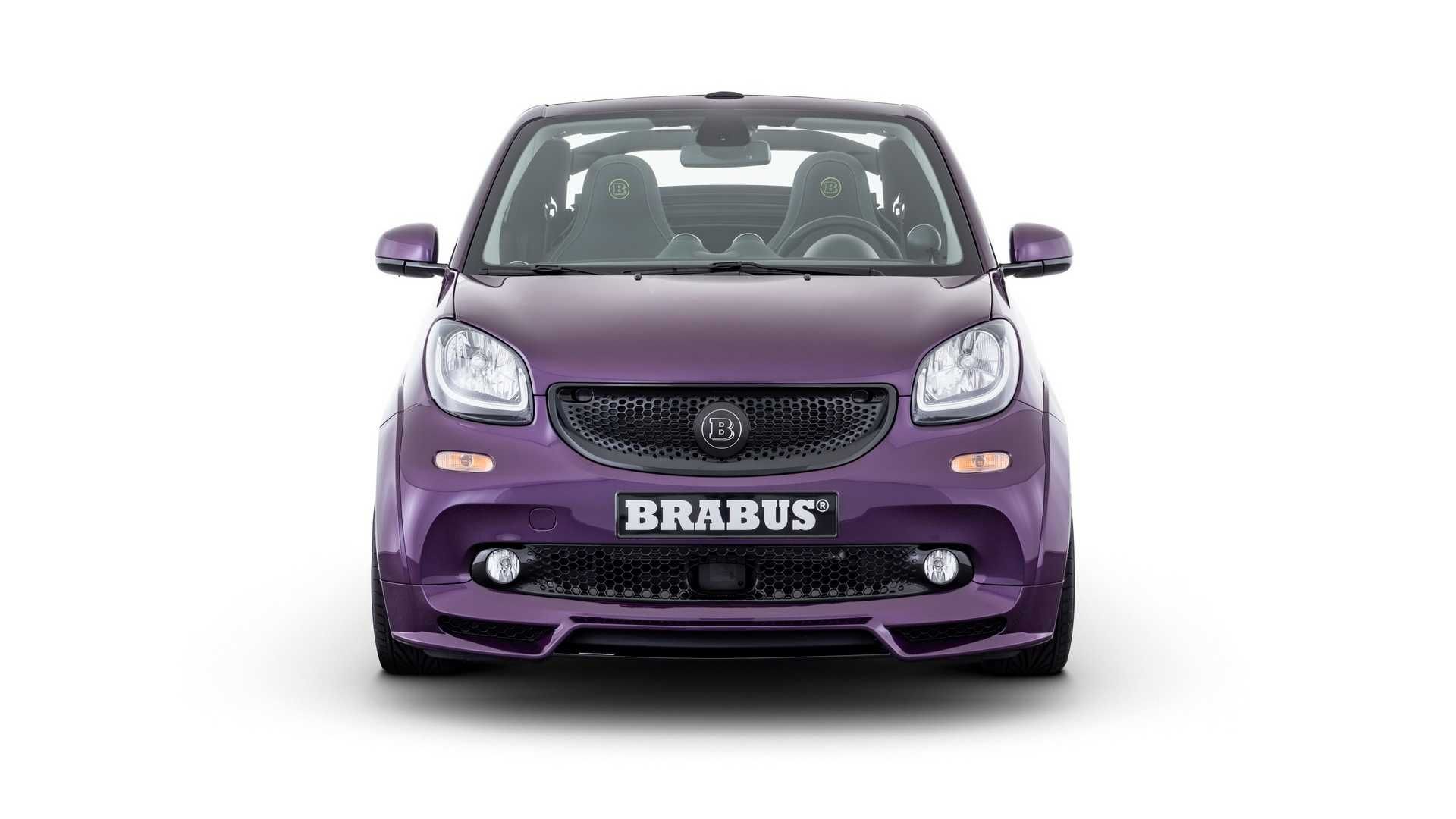Brabus, the famed German tuner that's made a name for itself by extracting ludicrous amounts of power out of some already very potent V-8s and V-12s that were at the heart of Mercedes-Benz's lineup of sedans and sports cars, brought to the Frankfurt Auto Show in 2019 a serving of re-heated stew. This is, by all intents and purposes, the Smart EQ Fortwo Ultimate E Shadow Edition Cabrio we've seen already earlier this year at Geneva, minus the Gunmetal Grey paint. It's got just as much power, the same oversized rims, the same hunched widebody, and the same tacky details like the illuminated door sills. You may never see one with your own two eyes since Brabus only plans to sell 28 (fewer than the amount of Ferrari 250 GTOs in the world) but you can't blame Brabus for only making a couple of dozen of these since it has already oversaturated the market with the 28 units of the Shadow Edition. Granted, this one is cheaper by a few grand although at €59,000 in Europe it's not cheap in the grand scheme of things.
So, let's say you're in the market for an ultra-small city car that's also 100% electric and features a folding roof. What does that say about you? Well, on paper, you're a person who could do without the worries related with having to find a parking spot in the bustling downtown area of the city while also trying to do his or her part in reducing pollution - all with a dribble of fun added to the experience by the open-air feel of a cabriolet. What all this means is that the person that would be in the market for a Smart EQ Fortwo Cabriolet isn't looking for what the Brabus Ultimate E is offering, i.e. big wheels, more power, and less practicality because of the lowered ride height and the fact that it doesn't come with a bigger battery. In spite of all that, it exists and it's not even the only Brabus-tuned Smart Fortwo on the European market, there tamer options in the German company's portfolio if the widebody doesn't necessarily float your boat.
2020 Smart EQ Fortwo Ultimate E Cabrio by Brabus
- Make: Array
- Model: 2020 Smart EQ Fortwo Ultimate E Cabrio by Brabus
- Horsepower: 91
- Torque: 133
- [do not use] Vehicle Model: Array
Exterior
The Smart Fortwo is one of the most famous cars that debuted towards the tail end of the 20th century. Originally designed in the early '90s under the Swatch name by Nicolas Hayek, then-CEO and founder of the Swatch Group that specializes in watches and jewelry, the car was supposed to feature electric motors from day one. The project, initially supported by Volkswagen, stalled when the German automaker couldn't decide whether to go forth with an all-electric drivetrain or a hybrid one that would've been cheaper at a time when the Prius hadn't even been released. In fact, the Prius only broke cover a year before the Smart's unveiling but for the first few years, it was only sold in native Japan, with the Honda Insight (launched in '99) being the first hybrid vehicle to be sold outside of Japan.
Due to Volkswagen's indecision, Hayek took his ideas to Mercedes-Benz and, in '94, the Micro Compact Car (MCC) company was founded as a joint subsidiary of Daimler-Benz and SMH (the Swiss Watchmaking and Microelectronics Association). In due time, however, Mercedes-Benz also realized implementing hybrid technology into this platform may not be the best idea and both MCC and Hayek jumped ship when the disagreement arose. Mercedes-Benz continued to develop the car around a traditional internal combustion engine placed in the back.
Brabus is a German tuning company founded in 1977 by Bodo Buschmann and Klaus Brackmann with the aim of modifying cars to Buschmann's very high standards. The company became known as a Mercedes-Benz specialist, often extracting more power out of Mercedes-Benz engines than AMG itself, probably the most famous Merc tuner that actually became a wholly subsidiary of Mercedes AG in 2005 thus losing its independence that Brabus still proudly retains.
The first Brabus-tuned Smart was released in 2003 and it featured the smallest engine ever seen on a Brabus-badged product with a capacity of just 0.7-liters. By comparison, the twin-turbocharged V-12 that powers the Brabus Rocket 800 (based on the C-Class) displaces 6.3-liters and is good for about 900 horsepower. The Smart Brabus, on the other hand, could only muster 74 horsepower. In pure Brabus style, the car came with wider arches, bigger exhaust tips, bigger wheels, and lowered suspension, as well as a more luxurious interior.
The same recipe has been applied to the new Smart EQ Fortwo Ultimate E Cabrio, the - supposedly - standard version of the Smart EQ Fortwo Ultimate E Cabrio Shadow Edition unveiled at the Geneva Car Show this year also. Despite this being no special edition, Brabus will still only make 28 examples of it just like it did of the Shadow Edition. Go figure.
The lower grille is placed in a caved-in area of the front fascia and features the fog lights in the upper corners and the radar hidden poorly - as ever - in the middle. There are two more face inlets on either side of the black lip of the front bumper that acts as the linking element between the two. Compared to the second-generation Smart Fortwo Brabus, the Ultimate E looks a lot meaner, mainly thanks to the lower, horizontally mounted grille. The older model featured hawk-eye headlights that would work better on a 'meaner' front end than the big, bulky ones on this pre-facelift third-gen model but, overall, the little thing really tries to not look like a Tonka toy.
From the side, you'll first notice the ridiculously large 18-inch rims (that are, however, light in weight, none of them exceeding 16 pounds) hugged by low profile tires. The discs behind these Y-design rims aren't as big as you'd expect and, in fact, you've actually got drums in the back. The main reason for the bulbous arches in the front and in the back are these wheels that are considerably bigger in diameter than the stock 16-inch ones (in the past, Brabus models also came with 16-inch alloys but they've upped the ante since).
The sporty look is completed by a fading line placed above the car's waistline on the doors and by the Brabus-labeled rocker panels with lights incorporated in the side skirts/door sills that illuminate the ground. This may seem like a tacky detail but let's not forget many luxury automakers fit lights into the bottom of the doors that display the illuminated logo of the brand so it's not unusual to see something like that on the newest Smart Brabus.
The side mirror is painted in the color of the exterior - Royal Purple, in the case of the car you see here - and there's even a small fake vent aft of the doors, above the rear wheel arches.
The rear bumper features a subtle diffuser with four vertical elements. The whole diffuser part in the back is blacked-out, like the lower parts of the side skirts, and the lip in the front. Overall, the Widestar package (said to be developed in a wind tunnel) doesn't look too bad but it's still strange to see a Smart being at the receiving end of such a treatment. A Brabus Smart still feels like a car that shouldn't exist but, somehow, it forces itself onto the real world for the better part of 16 years although we're having a hard time picturing the ideal customer of such a car. Granted, it does stand out, especially in that plucky plum color.
2020 Smart EQ Fortwo Ultimate E Cabrio by Brabus exterior dimensions
|
Wheelbase |
73.7 in |
|---|---|
|
Length |
106.1 in |
|
Width |
65.5 in |
|
Height |
61.2 in |
Interior
The Smart was designed to be as small as possible without sacrificing cabin space. From the very beginning, the Smart Fortwo could carry two adults no matter their size employing offset seats that have been ditched by the third-generation model. The Brabus-tuned versions feature lavish seats with leather upholstery that are more comfortable than a stock Smart's seats.
If the Shadow Edition stands out on the inside due to the extensive usage of red leather (on the seats, the dash, the interior door panels, the rim of the steering wheel, and even on the armrest between the seats), the standard Ultimate E is a bit bland on the inside.
When you step behind the steering wheel you are greeted by the funky-looking gauge cluster that's very simple: you've got an LCD screen in the middle telling you everything you need and, circling it is the speedometer that's analog with red numbers on a white background. The surround of the dome that houses the dial (you can't call that screen a dial, so only the speedometer counts) as well as the frames of the air vents are colored in purple like the bodywork. We guess these elements will take on whichever color you peak for your Smart EQ Fortwo Cabrio tuned by Brabus.
The center console is dominated by the seven-inch touchscreen that shares the space with the slider for the heating and ventilation system. The infotainment system itself is straightforward and not particularly advanced (when you compare it with what Mercedes-Benz is packing in its latest products) and that's because it comes from Renault's parts bin - remember, some 70% of the Fortwo's bits are shared with the current-gen Clio although the car itself is still made at Smartville. Below this screen, that protrudes forwards from the dashboard's center panel, there are a few other buttons and knobs lower down on the center console. The hazard lights button is actually placed between the two A/C vents on the top of the dash in the middle.
In front of the faux Renault Clio shifter (it's there just so you can toggle between Drive, Park, Reverse, and Neutral) there are two cup holders, the button that allows you to drop the soft top or to get it back up again (the whole process, Smart says, takes only 12 seconds and can be done regardless of the speed you're traveling at) and a button that allows you to select between the four driving modes.
The first one effectively turns the Brabus Smart into just any old Smart as the electric motor responds as if it'd forgotten it powers the meanest Smart that money can buy.
Brabus boasts with the fact that it added to the Fortwo's interior some aluminum - around the shifter knob, the handbrake while the pedals are made out of drilled aluminum. The carpets are all Brabus-labeled and you really overdose on Brabus upon opening the door and realizing that the door sill is adorned with another (illuminated) Brabus logo "which, like the emblem in the stainless-steel footrest in the driver's footwell, changes color from white to red." That's truly the kind of stuff you pay over 60 grand for at the end of the day.
Safety-wise, the Smart is a tough nut to crack due to its safety cell. However, it's quite low on active safety features and actually comes with only six airbags to the coupe's eight - due to the cabrio top. Talking about the top, the roof rails aren't part of the safety cell so you can take them off for a full-blown open-air experience but remember to pop them back in place when you decide to get the roof back up.
2020 Smart EQ Fortwo Ultimate E Cabrio by Brabus interior dimensions
|
Front row headroom |
40″ |
|---|---|
|
Front row legroom |
41″ |
|
Front row shoulder room |
48″ |
|
Front row hip room |
45″ |
Drivetrain
As even a 2019 MY Smart Fortwo tips the scales at well under a metric ton - 880 kilograms or 1,940 pounds to be precise - the choice of engines may seem like going through some of the most gutless powerplants available on a new car today but, to be fair, you don't need too much oomph to have fun in a Smart. Five years ago when it was introduced, the Fortwo was available with either a 1.0-liter engine producing 76 horsepower and 70 pound-feet of torque or a turbocharged 0.9-liter 89 horsepower unit that cranked out 100 pound-feet of torque. Both of these three-cylinder engines can be mated to a five-speed manual or a three-speed 'twinamic' dual-clutch automatic. The Smart EQ does the job with a single-speed automatic.
If you are coy about going with the electric Smart, don't be. Granted, the Fortwo won't go too far on a battery charge due to the small size of the battery but Smart's been working for over a decade on its technology, so it pretty much knows the ins and outs of making EVs by now. The old eco-friendly Fortwo - known as the Fortwo Electric Drive - came with the same 17.6 kWh lithium-ion battery as on the current model but the engine is more powerful now, going up from 55 watts (74 horsepower) to 66 watts (80 horsepower). The issue with the increase in output is that the range went down with an EPA-certified range of 57/8 miles - the coupe can go a mile more on paper. Smart does say that, in the real world, the range can exceed 60 miles in 'Eco' mode but that's still not a lot when you've got the decidedly bigger Nissan Leaf with its 40 kWh lithium-ion battery and an EPA range of up to 150 miles (the Leaf is also available in the Plus version with a 62 kWh battery that allows for a range of up to 226 miles).
So, the power of the electric Smart won't see it make the cut in the Guinness book of records but you can at least rest assured that the chassis is strong enough to cope with the existing power. The open-top version has been stiffened up with the addition of torsional bulkheads beneath the car, a crossbar behind the passenger seats, and reinforced A-pillars. Suspension is independent in the front with MacPherson struts and there's a De Dion axle in the back. Brabus says it fiddled with the suspension and the shocks to give the Smart a bit more poise while not sacrificing the comfortable ride of the microcar. Steering is by rack-and-pinion with disc brakes in the front and drums in the rear.
2020 Smart EQ Fortwo Ultimate E Cabrio by Brabus specifications
|
Engine |
Synchronous electric motor |
|---|---|
|
Battery |
17.6 kWh lithium-ion battery |
|
Output |
92 horsepower |
|
Torque |
133 pound-feet of torque (in ’Sport+’ mode) |
|
Transmission |
Single-speed automatic |
|
Suspension |
Independent with MacPherson struts in the front and a De Dion axle in the back with Brabus parts |
|
Brakes |
Discs in the front and drums in the back (with ABS) |
|
Performance 0-62 mph |
10.9 seconds |
|
Top speed |
81 mph |
|
Weight |
1,940 pounds |
|
Charging times (stock version) |
|
|
120V: |
16.0 h |
|
240V: |
8.0 h |
|
400V: |
3.0 h |
|
Range |
78 miles (’Eco’ mode) |
Pricing
Here's where things really get pesky with this Smart. You'd forgive its lackluster output and range if it didn't cost too much but, sadly, it does. Brabus will tell you it's because of all of the things it did to it and due to the extreme exclusivity but with an MSRP across the pond of $65,000, it's more than twice the $28,100 price tag of the stock model. You could argue that you're never going to get a Smart EQ Fortwo Cabrio for under $30,000 because every option will leave you bankrupt - besides the fact that the soft-top version is $4,200 more expensive than the EQ Coupe. If you want features like leather seats or the touchscreen infotainment system with navigation included, you'll pay a hefty premium when, frankly, you shouldn't.
The Brabus is basically packed with everything available on the Fortwo but does this justify the price of not one but two E-Golfs (with 125 miles of range and a lot more room)? We think not. At least not in a world where you can buy a Mercedes-Benz GLC for $50,000 and a Lincoln Continental for the price of this Smart - not to mention the plethora of luxury options on the second-hand market, including AMG-tuned and Brabus-tuned Mercs by the dozens.
Having said all that, if you don't have a lot of money but you still want a brand-new EV, you should turn to... Smart! While the Ultimate E flaunts a ridiculous price tag, the more mundane Smart EQ Fortwo Coupe starts at just under $24,000. Add the EV incentives from the government and you end up with the cheapest EV available for sale in America.
Final Thoughts
The bottom line here is that the Brabus-tuned Smart EQ Fortwo Ultimate E Cabriolet doesn't deserve the 'Ultimate' name. Nothing it offers is 'ultimate'. Not the power, not the range, not the acceleration, not the feeling behind the wheel. What this is, then, is a glorified toy for people who want to stand out and want to brag about driving a very rare car that's not an exotic supercar - if such people exist. The jump from the cheapest EV in the U.S. to this is not justified by what the Ultimate E offers and we'd rather choose a standard fixed-head Smart EQ over this bling-bling version any day of the week.
Further reading
Read our full review on the 2015 Smart Fortwo
Read our full review on the 2017 Smart Fortwo Electric Drive
Read our full review on the 2009 Smart Fortwo Electric Drive
Read our full review on the 2017 Smart Fortwo Brabus Edition #2

